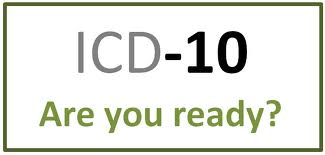The End of Delayed Documentation
ICD-10 Implementation Planning – Where Do We Begin?
These are the planning phases to consider in preparation for the ICD-10 Implementation
Was this information valuable?

These are the planning phases to consider in preparation for the ICD-10 Implementation. Each of these four phases will outline time frames and steps you should take to better prepare for the October 1, 2015 deadline. You may consider partnering with an EMS Consulting Firm familiar with ICD-10 to help you develop a plan and navigate your company through the steps.
Phase 1 - Implementation Planning:
Start by assembling an Implementation Team. This team should consist of representatives
and decision makers from the following departments:
-
Billing/Coding
-
Finance/Accounting
-
Clinical
-
Education
-
Quality Assurance/CQI
-
IT Department
-
Senior Management
Now that you have your implementation team in place, it’s time to start formulating a plan. Phase 1 is the pre-implementation stage and should be completed between the first quarter of 2013 and the second quarter of 2013. If you haven’t already begun preparations, don’t panic. You should have your implementation team assembled and working through these steps by the end of this month. Your implementation team should plan to meet monthly and discuss the progress of each step in this phase.
-
Establish deadlines for each phase - meeting the deadlines of preparation for each stage is critical to the success of the transition
-
Identify Resources - establish what resources are available to aide in the transition
-
Impact Assessment – discuss what effects your organization may expect in the months following the implementation date (cash flow interruptions, increased denials, etc.) and
formulate a plan to continue business operations if the money suddenly stopped
coming in (discuss the need for a dedicated line of credit) -
Initiate Dual-Coding – your billing department should begin dual-coding in preparation as soon as possible
-
Begin Documentation Audits – Compile a list of the most utilized ICD-9 codes and map these codes to its ICD-10 counterpart. Audit the documentation to see if the documentation is specific enough to support the ICD-10 code. (This will highlight the areas that need attention during documentation training)
-
System Upgrades – determine if additional system updates will be required and set a deadline for implementation
-
Coder Training – determine where training can be obtained and register each member of your billing staff
-
Coder Materials – determine what materials your billers and coders will need. Consider ICD-9 and ICD-10 coding books and EMS quick coder materials. Make plans to purchase these tools as soon as they are available
-
Documentation Training – discuss the approach and formulate a plan, including updates to your current ePCR software applications
Phase 2 - Implementation Preparation:
Phase 2 involves actionable items developed in Phase 1 and should be completed by the fourth quarter of 2013 but no later than the second quarter of 2014.
-
Documentation training should be well underway
-
Coder training should be completed or near completion
-
Dual-Coding should be in full swing and coders should be more proficient
-
Continue documentation audits using dual-coding initiatives
-
Set deadlines for EDI testing
Phase 3 - GO LIVE!:
Phase 3 involves actionable items developed in Phase 2 and should be completed by the first quarter of 2014 but no later than the third quarter of 2014.
-
This is it! This is what all of the planning and training has led up to. All of the practice and dress rehearsals have lead up to this moment. It’s show time!
-
Begin submitting claims with ICD-10 codes to payers who are ready to accept them
-
Closely monitor claims sent with ICD-10 codes for payer activity and trend patterns
Phase 4 - Post-Implementation Follow Up:
Phase 4 involves intense follow-up to monitor for patterns in the revenue cycle and
unforeseen challenges that have been discovered. This phase should be monitored from the fourth quarter of 2014 through the fourth quarter of 2015.
Related Posts
4 Must-have Data Points for Dispatch-Billing Alignment and Maximum Reimbursement
Podcast: 4 Ways ePCR Software Can Relieve EMS’ Biggest Headaches
ZOLL Pulse Blog
Subscribe to our blog and receive quality content that makes your job as an EMS & fire, hospital, or AR professional easier.
ZOLL Pulse Blog
Subscribe to our blog and receive quality content that makes your job as an EMS, fire, hospital, or AR professional easier.




